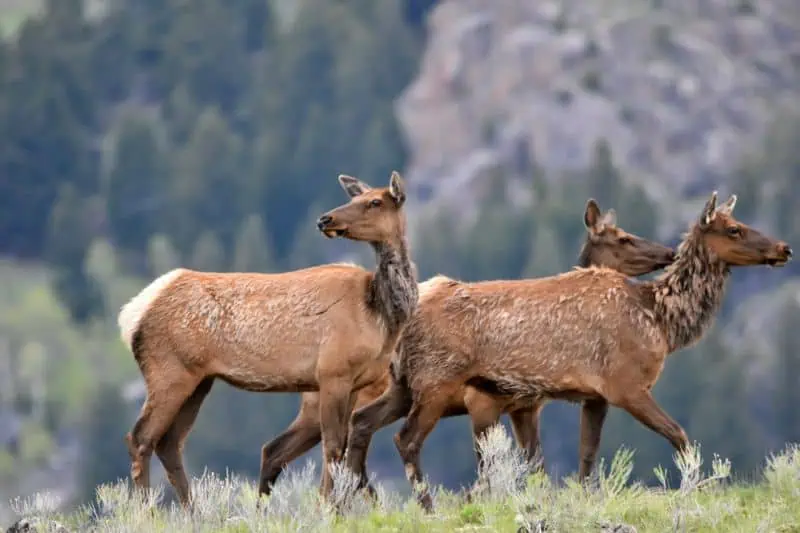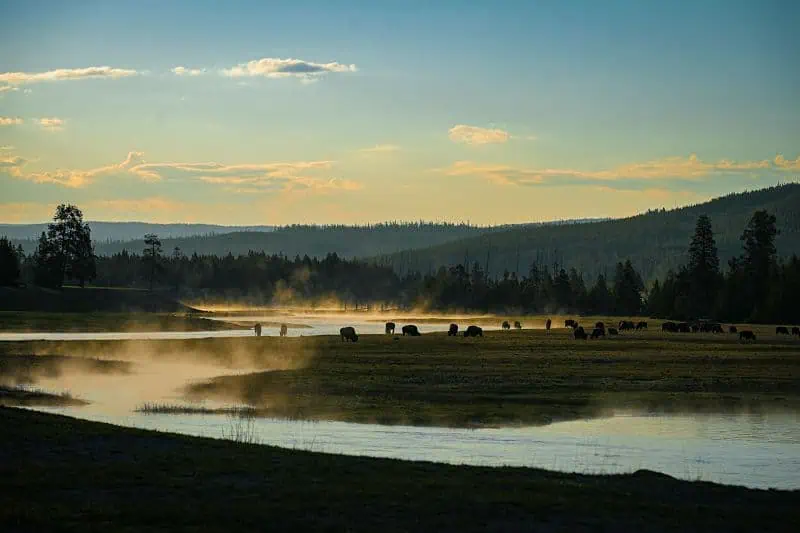“How Wolves Change Rivers” was discovered through long-term ecological research in Yellowstone National Park, particularly after the reintroduction of wolves in 1995. Scientists, including Doug Smith, a lead biologist in the Yellowstone Wolf Project, and William Ripple, an ecologist at Oregon State University, observed how the return of wolves triggered a trophic cascade—regulating elk populations, restoring vegetation, and even altering river dynamics. Their findings provided compelling evidence of how keystone predators shape entire ecosystems, influencing conservation and rewilding efforts worldwide.
How Wolves Change Rivers: The Yellowstone Restoration Story
1. The Disruption: Wolf Extinction and Ecosystem Collapse
In the early 20th century, wolves were systematically eradicated from Yellowstone National Park as part of predator control efforts. By the 1920s, there were no wolves left in the park, and their disappearance triggered dramatic ecological shifts.
Without wolves:
- Elk populations surged, as their primary predator was gone.
- Overgrazing devastated vegetation, particularly young willow, aspen, and cottonwood trees.
- Riverbanks eroded, as tree roots that once stabilized the soil were stripped away.
- Rivers cease to meander when vegetation is lost, as the reduced resistance accelerates water flow, causing channels to straighten and lose their natural curves.
- Beaver populations collapsed, as they relied on willow for food and dam-building materials.
- Coyotes flourished, leading to a decline in small mammals, disrupting prey availability for birds of prey and foxes.
- The ecosystem became unbalanced and degraded, with fewer forests, fewer wetlands, and less biodiversity.
Yellowstone was shifting towards a simplified, degraded landscape, dominated by unchecked herbivory and unstable waterways.

2. The Turning Point: Wolf Reintroduction
In 1995, as part of a historic rewilding effort, 14 gray wolves were reintroduced to Yellowstone from Canada, followed by 17 more in 1996. As the wolf population grew, a trophic cascade unfolded, restoring balance across multiple levels of the food web.
Key changes included:
- Elk behavior shifted: Instead of grazing freely across the entire park, they became more cautious and avoided open riverbanks and valleys where wolves could ambush them (Ecology of Fear).
- Vegetation rebounded: With fewer elk feeding on young saplings, aspen, willow, and cottonwood forests recovered along riverbanks.
- More trees meant more habitats: The return of forests supported songbirds, insects, and small mammals, boosting biodiversity.
- Beavers returned: With willow populations increasing, beavers once again had food and materials to build dams and lodges, creating wetlands that supported fish, amphibians, and aquatic plants.
Wolves weren’t just affecting the elk—they were reshaping the entire landscape.
3. The Biodiversity Boom: Wolves Restoring Rivers
As wolves indirectly encouraged tree growth, Yellowstone’s rivers also began to change:
- Stronger tree roots stabilized riverbanks, preventing erosion and reducing soil loss.
- Rivers started meandering and regained their natural structure, creating stable waterways that improved water retention.
- Expanded wetland areas attracted otters, muskrats, ducks, and fish, increasing aquatic biodiversity.
- Predator-prey dynamics stabilized: With wolves reducing coyote populations, foxes, rodents, and birds of prey thrived.
The impact of wolves extended far beyond controlling elk—they restored the foundations of Yellowstone’s ecosystems.

4. Key Lessons from Yellowstone
This case study demonstrates several ecological principles:
5. Conservation Implications: The Power of Rewilding
The Yellowstone wolf reintroduction proves that rewilding apex predators can:
This success story underscores a simple but profound truth: when nature’s balance is restored, ecosystems heal themselves.
Conclusion
The reintroduction of wolves to Yellowstone not only restored predator-prey dynamics but also physically reshaped the landscape. By reducing elk overgrazing, wolves allowed trees and shrubs to regrow along riverbanks, stabilizing the soil and preventing erosion. With stronger banks, rivers meandered less, deepened, and retained water more effectively, creating healthier wetland habitats. This, in turn, supported beavers, birds, fish, and countless other species, increasing overall biodiversity. Wolves, by influencing herbivore behavior, set off a chain reaction that ultimately changed the flow of rivers and revitalized an entire ecosystem.



